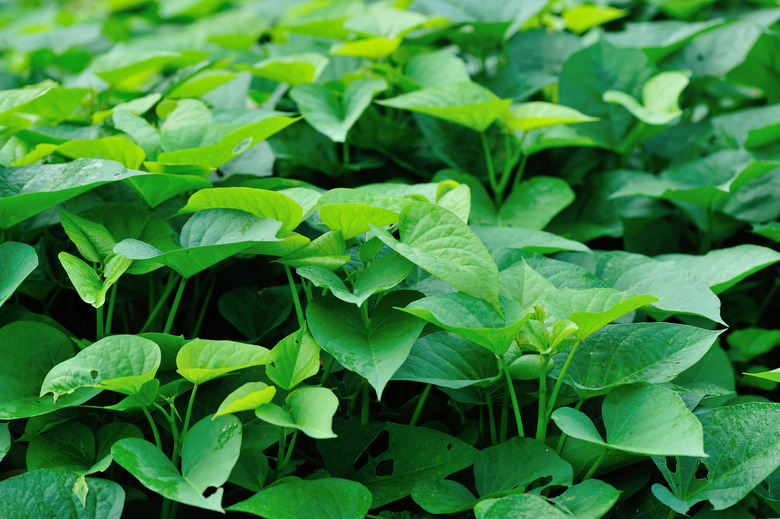Why Is My Sweet Potato Vine Brown?
We may receive a commission on purchases made from links.
Sweet potato vines (Ipomoea batatas, USDA zones 9-11) are frequently used as an accent plant in potted arrangements or as a bedding plant. Their heart-shaped leaves come in black, dark purple, chartreuse green and even multicolor patterns, adding a punch of color wherever they're planted. Browned leaves are likely caused by environmental conditions, such as drought or cold weather, but occasionally the plants may succumb to disease or insect infestations that turn the leaves brown.
Tip
Sweet potato vines often turn brown due to frost damage, root knot nematodes, fungal diseases and insect damage.
Sweet Potato Vine Frost Damage
Sweet Potato Vine Frost Damage
Sweet potato vines are native to the tropics and aren't at all frost hardy. Even a mild late spring frost may cause the leaves to brown. If the leaves are brown but not mushy, the plant will probably rebound and begin to produce new growth.
Blackened or mushy leaves indicate that the foliage has frozen and the existing leaves won't recover. Pull it up by the roots and inspect the root system. If you see firm tubers that resemble edible sweet potatoes, it's likely that your plant will resprout new leaves. Remove the dead stems to make way for new growth, and replant the tubers. Plant your sweet potato vine after the last expected frost to reduce the risk of this type of damage.
Root Knot Nematodes
Root Knot Nematodes
Root knot nematodes are tiny worms that feed on the roots and tubers of the sweet potato vine. In addition to brown or discolored leaves, you may notice stunted growth, especially during dry weather. As the nematodes feed, the plant is unable to take up water and nutrients, and eventually dies. Nematodes are difficult to control, and the best remedy is to remove infected plants. Nematicides, which are chemicals that control nematodes, generally are registered for use only by professional pesticide applicators or large-scale farming operations.
To prevent nematodes, plant sweet potato vines in a clean pot with new potting mix each year. Rotate sweet potato vines grown in the ground and plant them thickly interplanted with French marigolds (Tagetes patula) in the same growing area each year, which may reduce nematode numbers.
Fungal Disease Causes
Fungal Disease Causes
Root rot and fusarium wilt may cause sweet potato vines to develop yellow or brown leaves that wither and drop, although these diseases are more common in edible sweet potato crops than in ornamental sweet potato vines. There is no cure for these diseases. Pull diseased plants to prevent spreading the disease.
Prevent the disease by planting healthy plants and giving them enough space so air circulates freely. Water the plants using a soaker hose, rather than overhead sprinklers, and water early in the morning so the leaves dry quickly. Amend the soil so the pH is between 6.5 and 7.0. Use nitrate nitrogen rather than ammonium nitrogen to reduce the incidence of fungal diseases.
Plant Insect Damage
Plant Insect Damage
A single ornamental sweet potato vine isn't likely to succumb to insect attacks, but a large planting of the vines in a flower bed may attract bugs. Cucumber beetles, sweet potato flea beetles, grubs and leafhoppers all eat parts of the plant. Most of the damage is evident on the roots and tubers, although the leaves may become distorted, yellowed or brown.
Look for signs of insect infestation such as eggs or insects on the undersides of the leaves or a sticky substance known as honeydew secreted by leafhoppers and other leaf sucking insects. Consult a county extension agent to positively identify the pest and offer pesticide recommendations, such as insecticidal soap or neem oil. Avoid toxic chemical pesticides, which also kill beneficial insects in your garden.
